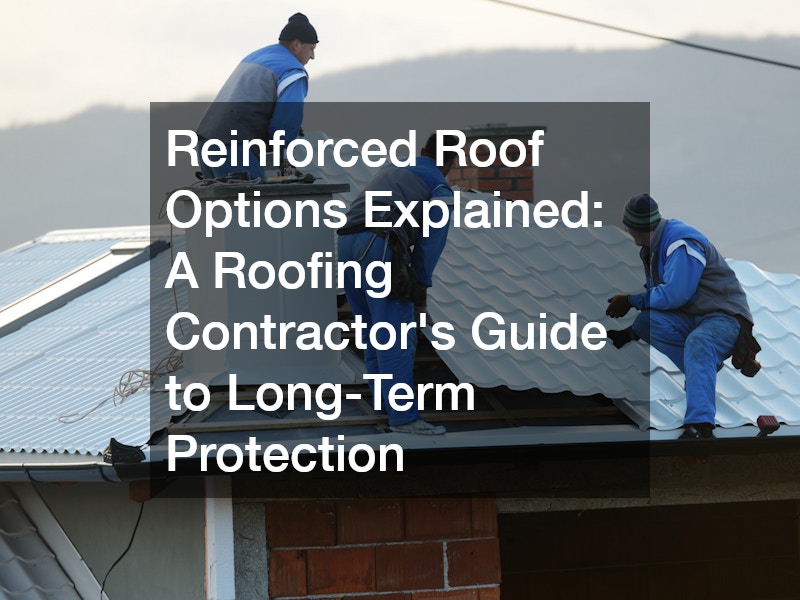The Comprehensive Guide to Reinforced Roof Installations
Introduction
In today’s construction landscape, reinforced roofs have become an essential component for both residential and commercial buildings. As harsh weather conditions and unpredictable natural occurrences become more frequent, ensuring the strength and durability of a roof is paramount. This comprehensive article explores the various aspects of reinforced roofs, highlighting their benefits, installation methods, and maintenance tips.
While traditional roofing solutions have served many for decades, the demand for reinforced roofs has surged. This is partly due to the increased awareness among property owners about the longevity and protective benefits they offer. Both roofing companies and individual roofers have adapted their services to meet these evolving needs.
The following sections will delve into the pivotal role that roofing contractors play in the installation and maintenance of reinforced roofing systems. Through expert insights and firsthand experiences, we will uncover why reinforced roofing solutions are the future of the industry.
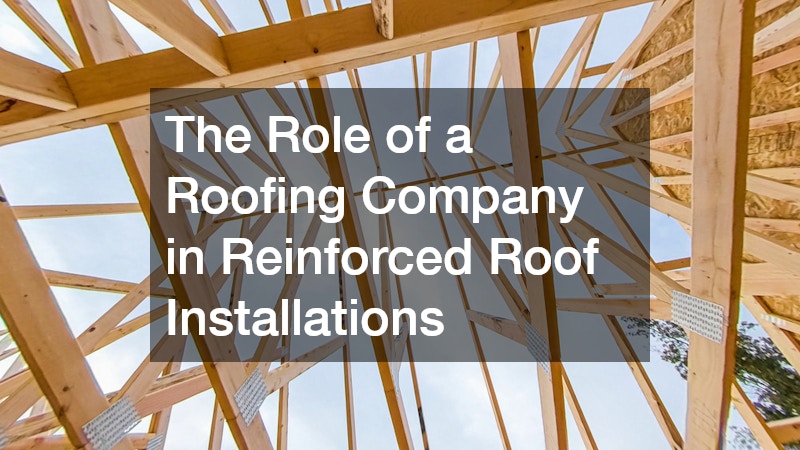
The Role of a Roofing Company in Reinforced Roof Installations
Roofing companies play a crucial role in the planning and execution of reinforced roof installations. These companies leverage their expertise to assess the specific needs of a property, factoring in local climate conditions and building regulations. By doing so, they ensure that each reinforced roof is designed to offer maximum protection and longevity.
Additionally, many roofing companies provide comprehensive support that includes everything from initial consultations to post-installation follow-ups. This end-to-end service is vital because it ensures that the reinforced roof is monitored and maintained, thus maximizing its lifespan. Professional roof repairs, offered by these companies, are also integral to keeping reinforced roofs in optimal condition.
Another important aspect is the training and development of roofers within these companies. By continually updating their skill sets, these roofing specialists are able to incorporate the latest technologies and methods into their work, enhancing the overall quality and effectiveness of reinforced roof installations.
Why Roofing Contractors Recommend Reinforced Roofing Systems
Roofing contractors often advocate for reinforced roofing systems due to their superior durability and resilience. Unlike traditional roofs, reinforced roofs are engineered to withstand extreme weather conditions, thereby providing an enhanced layer of security to property owners. This aspect alone makes them a popular choice among roofing professionals.
Furthermore, the materials used in these systems, such as high-grade steel and synthetic polymers, are designed to last for decades with minimal maintenance. This long-term cost-effectiveness is incredibly appealing to homeowners and businesses alike, driving a growing preference for reinforced roofs over conventional options.
Local roofers also highlight the aesthetic benefits of reinforced roofs, which can be customized to align with the architectural style of a building. This versatility, combined with unmatched durability, reinforces the recommendation of roofing contractors for opting towards reinforced roofing systems for any new construction or roof upgrade.
Local Roofers’ Insights on Long-Term Roof Protection
Local roofers, those familiar with specific regional challenges, offer invaluable insights into long-term roof protection, particularly with reinforced systems. They stress the importance of customizing roof designs based on local environmental factors such as wind patterns, precipitation levels, and temperature fluctuations.
A significant highlight is the ability of reinforced roofs to minimize damage from tree limbs, severe hail, and other forms of debris. According to local roofers, this not only protects the structural integrity of a building but also reduces costs associated with frequent roof repairs.
In sharing their long-term observations, local roofers indicate that reinforced roofing systems significantly reduce the need for emergency services after major storms. This reliability translates into peace of mind for homeowners and contributes to the growing reputation of reinforced roofs in the roofing industry.
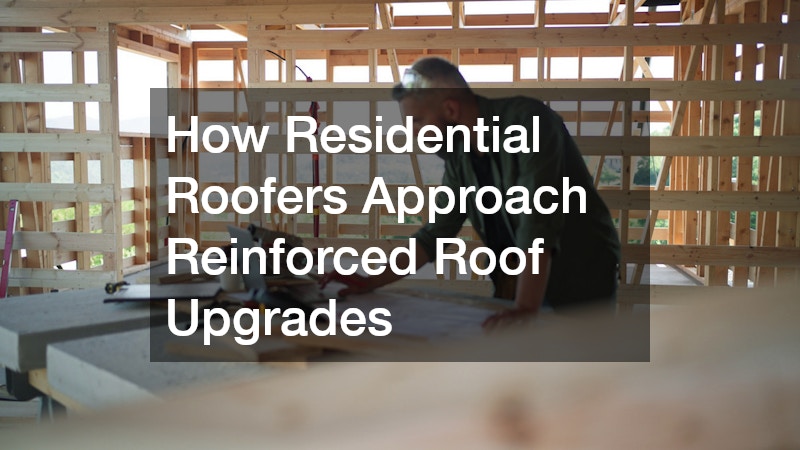
How Residential Roofers Approach Reinforced Roof Upgrades
Residential roofers play an integral role in the transition process from traditional to reinforced roofing systems. Their approach typically begins with a comprehensive assessment of the existing roof structure to determine compatibility and requirements for reinforcement.
During upgrades, residential roofers prioritize the integration of advanced materials that complement the existing aesthetic and structure. This seamless integration not only enhances the building’s appearance but also ensures a robust and durable roofing solution.
Training and skill refinement facilitate the skilled execution of these upgrades, allowing residential roofers to deliver high-quality, durable, and aesthetically pleasing outcomes. Consequently, homeowners can enjoy both immediate and long-term benefits from their reinforced roof installations.
Roofing Specialists and Their Expertise in Durable Roof Designs
Roofing specialists bring a profound level of expertise to durable roof designs, particularly when it comes to reinforced roof installations. With their in-depth knowledge of structural engineering, these experts are adept at creating solutions that improve safety, maintain aesthetics, and enhance the lifespan of roofs.
The collaboration between roofing specialists and other professionals, such as engineers and architects, is vital. Together, they fine-tune every detail to ensure that reinforced roofs meet stringent quality standards and provide reliable protection against environmental threats.
Innovative design ideas and cutting-edge technology remain at the heart of a roofing specialist’s offering. By leveraging these resources, they continue to provide extremely durable roof installations that set the standard for quality in the roofing industry.
Comparing Traditional Roof Repairs with Reinforced Roof Solutions
Traditional roof repairs revolve around addressing specific issues like shingle replacements and patchwork fixes. While effective for minor problems, they lack the long-term benefits that come with reinforced roof solutions. Reinforced roofs, with their advanced materials and construction techniques, offer heightened longevity and resilience.
From an economic perspective, traditional repairs may appear cost-effective initially but tend to accumulate costs over time due to frequent maintenance. On the other hand, the upfront investment in reinforced roof systems proves financially beneficial in the long run through reduced upkeep and extended service life.
In addition, reinforced roofing solutions inherently come with enhanced safety features. From providing stability during severe weather to preventing leaks and water damage, these systems mark a significant advancement over traditional repairs, fostering peace of mind for property owners.
The Benefits of Hiring a Local Roofing Company for Reinforcement Projects
Enlisting a local roofing company for roof reinforcement projects offers numerous advantages that range from personalized service to rapid response times. Local companies possess unique insights into the environmental challenges faced by buildings in their area, which allows them to design customized reinforcement solutions effectively.
Furthermore, the proximity of local roofing companies enables them to offer timely maintenance and repairs, ensuring that reinforced roofs remain in optimal condition. This prompt service capability is a significant advantage in preventing minor issues from escalating into major problems.
Also noteworthy is the community trust and reputation that local roofing companies have cultivated over years of service. This establishes reliability and confidence in trusting them with crucial reinforcement projects, thereby yielding excellent results for property owners.
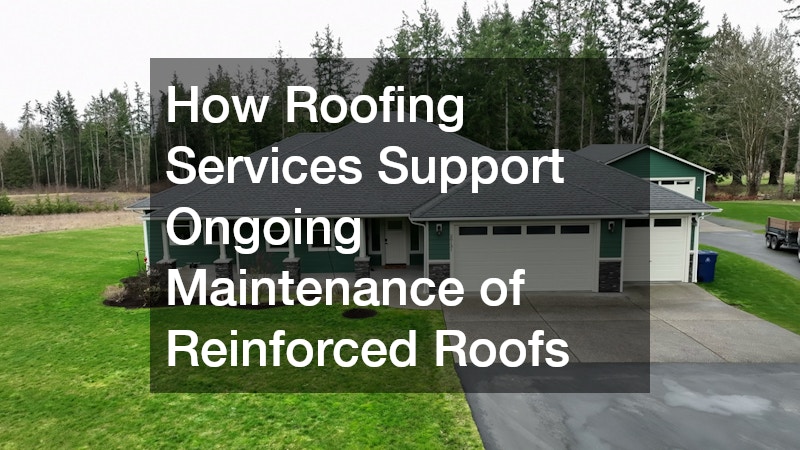
How Roofing Services Support Ongoing Maintenance of Reinforced Roofs
Effective ongoing maintenance is vital for prolonging the lifespan of reinforced roofs, and roofing services provide full-spectrum care to meet this need. These services include routine inspections, cleaning, and repair work, all aimed at safeguarding the functional integrity of reinforced roofs.
Roofing services leverage specialized tools and technology to identify potential concerns early, effectively preventing possible future damage. This proactive approach ensures that reinforced roofs retain their resilience and continue to provide optimal protection to buildings.
Additionally, regular maintenance through professional roofing services can enhance the aesthetic appeal of reinforced roofs over time, thus contributing to maintaining property value. Ongoing support and expert guidance from roofing professionals are indeed fundamental to maximizing the efficacy of reinforced roofing systems.
Common Challenges Roofers Face When Strengthening Roof Structures
Despite the clear benefits, roofers face several challenges when strengthening roof structures with reinforcement. These challenges often stem from attempting to work within the limitations of existing architecture and materials. Additionally, ensuring proper bonding between the new and old materials is crucial to achieving desired durability.
Weather conditions can also impede progress during reinforced roof installations, complicating the scheduling and execution of reinforcement tasks. As such, roofing companies must be adept at adapting their methods to optimize outcomes despite these challenges.
Lack of space on older or uniquely designed buildings can further complicate reinforcement projects. In these cases, expert roofers must be innovative in their approach, employing specialized techniques and equipment to overcome spatial constraints and complete reinforcements effectively.
Reinforced Roofing and the Future of Residential Roof Repairs
The advent of reinforced roofing marks a transformative shift in the realm of residential roof repairs and overall roofing practices. As the durability and performance of conventional roofs increasingly fall short, reinforced roofs are fast-becoming the go-to solution for homeowners seeking long-term resilience.
As roofing technologies continue to evolve, reinforced roof solutions are expected to incorporate more sustainable and eco-friendly materials. This ongoing innovation aims to reduce environmental impact while maintaining the functional integrity of roofs.
Overall, the future of residential roof repairs promises to be defined by a collective shift towards more robust, reliable, and sustainable solutions offered by reinforced roofing systems. By harnessing these advancements, property owners can safeguard their homes and investments for decades to come.
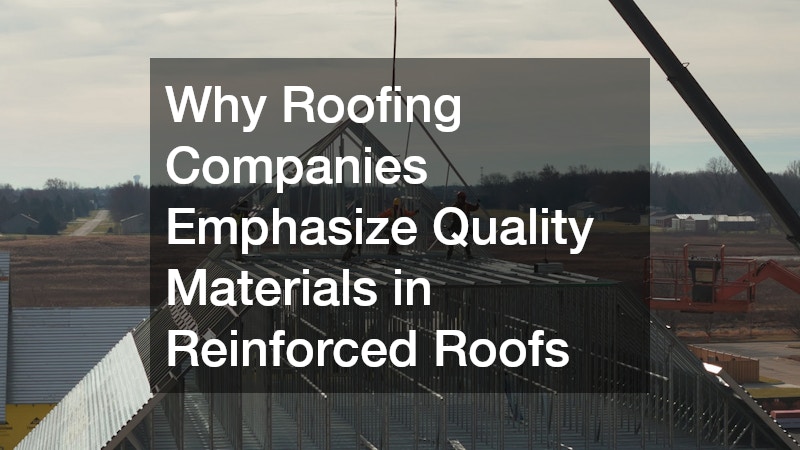
Why Roofing Companies Emphasize Quality Materials in Reinforced Roofs
Roofing companies consistently emphasize the use of quality materials when installing reinforced roofs because these materials underpin the overall effectiveness and durability of the system. High-quality materials ensure that the roof can withstand the stresses of environmental forces and human activity over its lifespan.
The employment of inferior materials could compromise the bridge between expectation and performance, leading to calamitous outcomes like structural failure. Thus, roofing companies prioritize securing the best available materials, such as advanced polymers and durable metals, for reinforced roofing projects.
Ultimately, the strategic use of top-tier materials not only assures enhanced protection for the building but also contributes to attaining industry-recognized strength and performance standards in reinforced roofs. This efforts result in superior safety and quality assurances for property owners.
The Difference Between General Roof Repairs and Structural Reinforcement
General roof repairs typically focus on maintaining the visual and functional integrity of a roof, addressing issues like leaks, tile replacements, and minor damage. These actions mainly target surface-level problems and provide short-term solutions to specific issues.
In contrast, structural reinforcement signifies a comprehensive approach where the entire framework of the roof is enhanced or reconstructed to boost its overall durability. This encompasses upgrading support beams, installing resilient materials, and implementing methods that enhance the roof’s resistance to environmental pressures.
The critical distinction rests in the scope and long-term impact of each process. While general repairs often necessitate regular repetitions, structural reinforcement aims to minimize interference with a robust protective solution, advocating for a future-oriented method of roof preservation.
Choosing the Right Roofer for Your Reinforced Roof Project
Selecting the right local roofing company for a reinforced roof project involves careful consideration of various factors, including experience, expertise, and certification. It is vital to verify that the chosen professional or company has extensive experience in reinforced roof installations and can offer references or demonstrate past successful projects.
Another critical factor is the roofer’s knowledge of the latest materials and techniques in reinforced roofing systems. This competency ensures that they can provide solutions that align with industry standards and emerging trends, combining efficacy with cutting-edge innovation.
Lastly, customer service and post-installation support play pivotal roles in the decision-making process. A reputable roofer offers ongoing communication and repair services, ensuring that reinforced roofs continue to deliver high performance and reliability in the long term.
Conclusion
Reinforced roofs represent a significant advancement in the roofing industry, bridging the gap between traditional and future roofing approaches. They embody not only stronger materials but also smarter engineering, offering property owners peace of mind in the face of increasingly unpredictable weather patterns. Skilled roofing companies and contractors are at the forefront of this transformation, continually raising the bar for both residential and commercial projects by delivering reinforced roof installations that combine performance, style, and sustainability.
From the careful selection of high-quality materials such as metal roofing and advanced composites to the application of industry-leading installation practices, the emphasis remains firmly on durability, safety, and environmental responsibility. Reinforced roofs are designed to resist high winds, heavy rain, and snow loads, minimizing the likelihood of costly repairs and extending the life of the structure itself. In addition, many roofing specialists now incorporate eco-friendly practices, such as energy-efficient coatings and recyclable materials, which further enhance long-term value for property owners.

